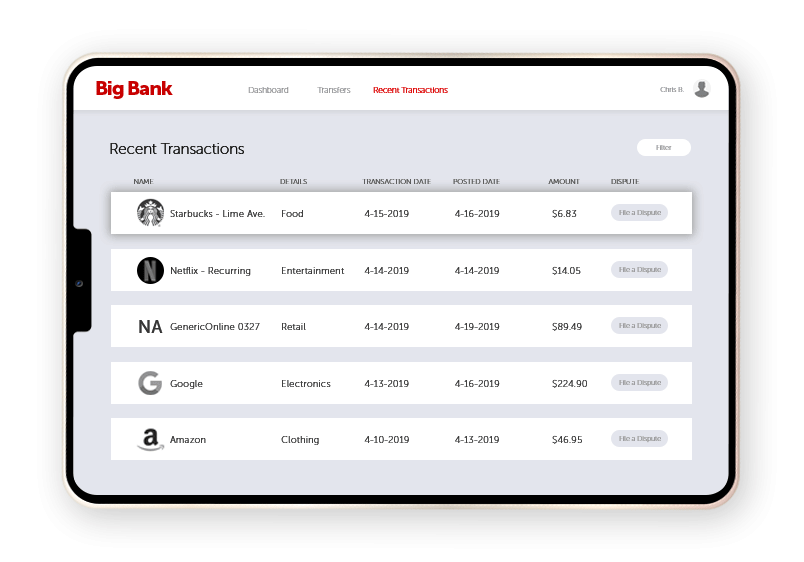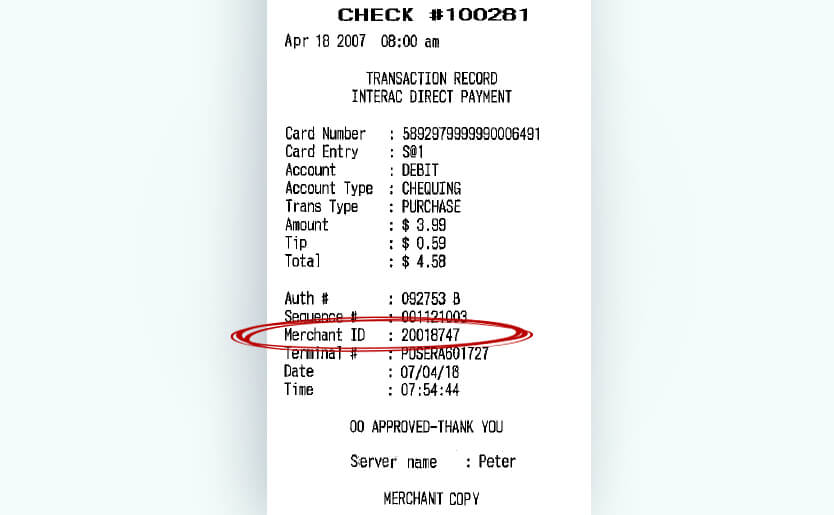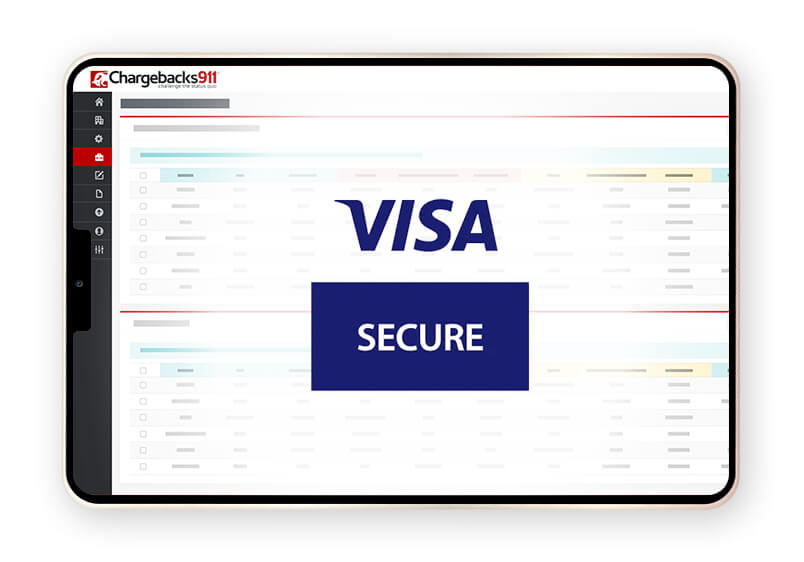Chargebacks911
Visa Chargeback Rules

Understanding Visa Chargeback Rules & Dispute Requirements
Merchants have some 3.8 billion reasons to accept Visa payments. That’s how many cards the company has in circulation, making the ability to accept Visa payments an important factor in any merchant’s success.
That said, the privilege of accepting Visa cards comes with some stipulations. Take the customer’s right to dispute invalid transactions, for instance. These chargebacks can frustrate merchants, especially when the sale being disputed was legitimate.
The chargeback system definitely favors cardholders. But, all parties have to adhere to a set of statutes that make the process at least relatively equitable for everyone. This post will examine Visa dispute rules: what they are, how they work, and how the card network is — and isn’t — involved with the dispute process as a whole.
Recommended reading
- Visa Debit Chargebacks: Here’s Everything You Need to Know
- What is the Visa Arbitration Process for Chargebacks?
- Visa Chargeback Time Limits: The 2024 Guide
- Visa Authorization Rules: Changes to Time Frames & Options
- Visa Chargeback Fees: 8 Tips to Help You Cut Dispute Costs
- Visa Acquirer Monitoring Program: Major Updates to VAMP
The Basics: How Do Visa Disputes Work?
Disputes provide a way for cardholders to recover their funds in cases of fraud or abuse. The Fair Credit Billing Act of 1974 mandates that all card networks must provide this option, but the law doesn’t offer a lot of specifics. That’s why card networks like Visa each developed their own rule sets.
The Visa dispute life cycle is complicated. But, to offer a basic overview, it looks something like this:
- Pre-Dispute: The cardholder contacts the bank to inquire about a suspicious transaction, or to demand their money back.
- Dispute: The issuer files a formal dispute. The cost of the transaction is debited from the merchant’s account.
- Dispute Response: The merchant resubmits the transaction, along with evidence showing it was legitimate.
- Pre-Arbitration: The bank rejects the merchant’s response, or provides new evidence to dispute the transaction.
- Final Decision: The parties agree to escalate the dispute to Visa, who makes a final decision and assigns liability.
Learn more about the dispute life cycle
Did You Know?
Technically speaking, Visa no longer uses the term “chargeback” in any official capacity. They refer to all chargebacks as “disputes.” However, many banks and merchants still use the term colloquially to refer to Visa transaction reversals.
Visa Reason Codes: Why Do Visa Disputes Occur?
Each dispute is assigned a reason code, which is meant to explain the reason for the dispute. There is a predetermined list of available reason codes, with Visa chargeback rules establishing strict circumstances under which each reach code is meant to be used.
Visa chargeback rules outline more than two dozen different reason codes that can be assigned to Visa disputes. That said, all Visa dispute reason codes can be divided into one of four primary dispute categories: fraud, authorization errors, processing errors, or consumer disputes.
Fraud
Authorization
Processing Errors
Consumer disputes
Learn more about Visa reason codes
All that being said, we should also mention that Visa themselves estimate that roughly three out of four chargebacks might be invalid claims. These cases are referred to as “first-party misuse,” or more commonly, as “friendly fraud.”
Visa Dispute Monitoring
Visa monitors merchant disputes and imposes limits on the number of disputes a merchant may receive. This is done through the Visa Dispute Monitoring Program, or VDMP.
VDMP is a compliance program administered by Visa for the purpose of controlling merchant chargeback issuances. If a merchant exceeds the monthly chargeback threshold set by Visa, they will be entered into the program. This will result in punitive fees, operating restrictions, and costly periodic reviews.
Thresholds for admittance into the VDMP are as follows:
| Program | Monthly Threshold |
| VDMP Early Warning | 0.65% chargeback ratio and 75 chargebacks |
| VDMP Standard | 0.9% chargeback ratio and 100 chargebacks |
| VDMP Excessive | 1.8% chargeback ratio and 1,000 chargebacks |
Merchants may exit the VDMP if they manage to bring their chargeback rate below the monthly threshold and keep it there for three consecutive months. If the merchant is under the limit for two months, then breach the threshold again, they’ll need to start over.
Visa Compliance: Resolving Disputes When Visa Chargeback Rules Don’t Apply
In some cases, one party in a transaction might have violated the Visa Core Rules, resulting in a financial loss for the another party. But, the client that suffered the loss does not have any dispute, dispute response, or pre-arbitration rights under the current circumstances.
For example, the merchant may have billed the cardholder for a delayed or amended charge without getting consent first. Or, a cardholder might have been reimbursed twice due to a credit or reversal processed before a dispute (a “double refund”). In these cases, the Visa compliance process offers a way to resolve the issue.
Visa compliance rules say that the filer must give the opposing party a chance to resolve their issue before initiating a claim. This is called “pre-compliance.” But, if the parties can’t agree to a resolution, Visa will step in to arbitrate the situation and determine who’s financially responsible.
Responding to Visa Disputes: Document Requirements & Deadlines
If a merchant believes that a dispute was filed without a valid reason, they’re entitled to submit a response and try to basically undo the chargeback. But, if that merchant wants to submit a dispute response, they must do so according to the requirements of the reason code in question.
Visa chargeback rules require compelling evidence to push back against any dispute claims. Each reason code has different evidence requirements, though. For example, photographic evidence might be acceptable as evidence against some dispute reason codes, but not others.
There are some regional rules that apply here, too. For example, if the transaction in question involves an issuer and merchant in the European region, Visa requires the issuer to contact the cardholder to review the evidence before proceeding.

If either the merchant or the issuer are in the European region, the issuer must give certification that they have contacted the cardholder to review the evidence before pursuing pre-arbitration (see the Visa Dispute Pre-Arb Requirements section below for more information).
Learn more about compelling evidence
The merchant should also provide a rebuttal letter. This explains the reason for the dispute, and gives context for whatever evidence the merchant decides to submit.
Learn more about chargeback rebuttal letters
Crucially, the merchant must submit these documents on time. Merchants must respond within 30 days of “day one” for each phase. In Visa’s case, day one is the day after each phase is initiated. Keep in mind, however, that the effective time limit may be much shorter than 30 days, as the bank must receive, review, and submit the documents in that timeframe. In many cases, the bank may expect a complete response within one week or less.
Learn more about Visa time limits
Avoiding Visa Disputes: Best Practices
So, what dispute prevention practices are allowed under Visa chargeback rules?
Adhering to best practices would be our top advice for any merchant. For instance, one can avoid “authorization” disputes by always obtaining a valid authorization before completing a transaction. Merchants can also avoid “fraud” disputes by using EMV chip-and-PIN technology for all card-present transactions.
Other crucial best practices include:
There are dozens more best practices merchants can adopt to stop chargebacks. Click below for more info:
Learn more about chargeback prevention
Avoiding Visa Disputes: Disclosure for Returns, Exchanges, & Cancellations
A lot of cardholders turn to chargebacks after unsuccessfully trying to return or exchange an item, or to cancel a service they no longer want. So, we can think about policies and practices regarding returns, refunds, and cancellations as another cornerstone of chargeback prevention.
To avoid a chargeback, one needs to make sure their policies are disclosed properly before the transaction. Visa chargeback rules lay out guidelines for what constitutes “proper disclosure” for both card-present and card-not-present transactions:
Card-Present Disclosure
- Disclosure statements are legibly printed on the face of the transaction receipt.
- Disclosure is accompanied by a space for the cardholder’s signature or initials, if disclosure is printed on the back of the transaction receipt or in a separate contract.
- Disclosure is either pre-printed or stamped on receipts near the customer signature line, before the customer signs.
Card-Not-Present Disclosure
- For phone orders, refund and credit policies must be be mailed, emailed, or texted to the cardholder. Merchants have to prove the cardholder received and acknowledged the policy, too.
- For online orders, disclosure can be included on a sequence of pages before final checkout, with a “click to accept” or other acknowledgement button.
- If not included on a sequence of pages before final checkout, disclosure can be placed on the checkout screen, near the “submit” or click to accept button.
- The disclosure may be a link to a separate page if that link forms part of the “click to accept” acknowledgement, and it refers to the full return, refund, or cancellation policy.
When the Dispute Remains Unresolved: Visa Dispute Pre-Arbs & Arbitration
In some cases, the issuer may not accept a re-presented transaction. They may reject the case, escalating to the next stage in the dispute process, called pre-arbitration.
Visa Pre-Arbitration
Pre-arbitrations, or “pre-arbs,” are sometimes referred to by different parties as pre-arbitration chargebacks. This is incorrect terminology, though. According to Visa, pre-arbitration is the correct term.
Pre-arbs usually happen because the issuer reviews the reason code and finds that there was information which the merchant left out or falsified. For example:
- The representment submission was missing evidence.
- Evidence provided did not refute the buyer’s claim.
- Evidence provided was not acceptable per the reason code.
- The merchant did not include a rebuttal letter or other documents.
- Evidence was deliberately falsified and submitted as if it were real.
Whatever the case, the merchant has either made a mistake or forgotten to include crucial evidence that the cardholder could provide. In response, the bank submits a chargeback pre-arbitration.
Allocation Workflow Pre-Arbs
With pre-arbitrations in the “Allocation” workflow, acquirers and merchants have a limited ability to challenge. Certain conditions apply, and Visa only allows a 30-day timeframe (individual acquirers typically set even tighter deadlines).
Visa calls this the pre-arbitration phase. However, it consists of what would traditionally be considered representment and the pre-arbitration chargeback.
Collaboration Workflow Pre-Arbs
Pre-arbs that stem from either “Consumer dispute” or “Processing Error” chargebacks follow a process similar to that used by Mastercard.
Here, the issuer rejects the representment and submits a pre-arb attempt. The Acquirer may then either communicate with the merchant, or act independently, depending on the situation. They may submit a pre-arb response, or simply concede the dispute.
Learn more about Visa pre-arbs
Visa Dispute Arbitration
Arbitration marks the final stage in the chargeback process. This happens because the parties involved are unable to reach a decision. So, Visa is asked to make a call.
There is a tight timeframe for this. If either party wants to escalate a dispute to arbitration, they must do so within ten days. Arbitration is also a costly option; the party found responsible could be on the hook for hundreds of dollars in fees.
Beyond arbitration, the only other option for merchants would be through legal means. Merchants can take customers to small claims court; however, this is the mostly costly and time-consuming option, and should be avoided whenever possible.
Is Knowing the Rules Enough?
Visa chargeback rules and regulations can be confusing. They are also somewhat flexible, to reflect the ever-changing payments landscape. That said, failing to comply with Visa rules is no laughing matter. It could translate to substantial financial loss.
Merchants experiencing above-average numbers of Visa chargebacks need to work with their acquirer to develop a detailed dispute-reduction plan. Contesting invalid disputes through chargeback representment is essential, as are Visa chargeback prevention best practices.
That said, it takes a considerable amount of time to learn and keep up with constant changes to Visa chargeback rules. Fortunately, Chargebacks911® offers a solution.
Our end-to-end chargeback management strategies help prevent disputes from happening, and recover revenue from chargebacks that do get filed. The result: greater ROI and long-term dispute reduction with a lot less hassle.
Don’t lose another dollar to a Visa dispute. Click below to see how much you could save.
FAQs
How does chargeback work on a Visa?
A chargeback on a Visa occurs when a cardholder disputes a transaction, prompting their bank to reverse the charge and return the funds to the customer. This process involves the merchant being notified and given an opportunity to contest the chargeback through documentation and evidence, following specific protocols established by Visa.
What is the time limit for Visa dispute?
The time limit for filing a Visa dispute varies depending on the reason for the dispute, but generally falls within 120 days from the transaction date. Merchants should be aware of these timelines to ensure they can promptly respond and manage any disputes effectively.
What happens when you dispute a Visa charge?
When you dispute a Visa charge, the cardholder’s bank initiates a chargeback process that temporarily credits the customer’s account while investigating the claim. During this period, the merchant is notified and has the opportunity to provide documentation and evidence to contest the chargeback, following Visa’s established protocols.
What is the 120 day chargeback rule for Visa?
The 120-day chargeback rule for Visa stipulates that cardholders must initiate a chargeback within 120 days of the transaction date to be eligible for a reversal. This timeframe is crucial for merchants to be aware of, as it affects their ability to contest disputes and manage associated risks.
What is the 540 day rule for Visa chargeback?
The 540-day rule for Visa chargebacks allows cardholders to dispute a transaction and initiate a chargeback within 540 days from the transaction date, specifically for certain types of transactions, such as those involving recurring payments or transactions that were initially flagged for fraud. This extended timeframe highlights the importance for merchants to maintain diligent records and proactive dispute resolution strategies to mitigate potential losses.
What are the conditions for a credit card chargeback?
The conditions for a credit card chargeback typically include instances such as unauthorized transactions, the non-receipt of goods or services, or charges that are inaccurate or fraudulent. Cardholders must provide sufficient evidence to support their claim, and merchants are given the opportunity to contest the chargeback with appropriate documentation.
This post Visa Chargeback Rules appeared first on Chargebacks911














